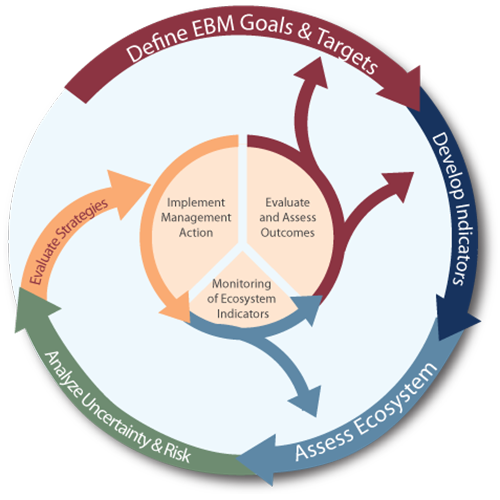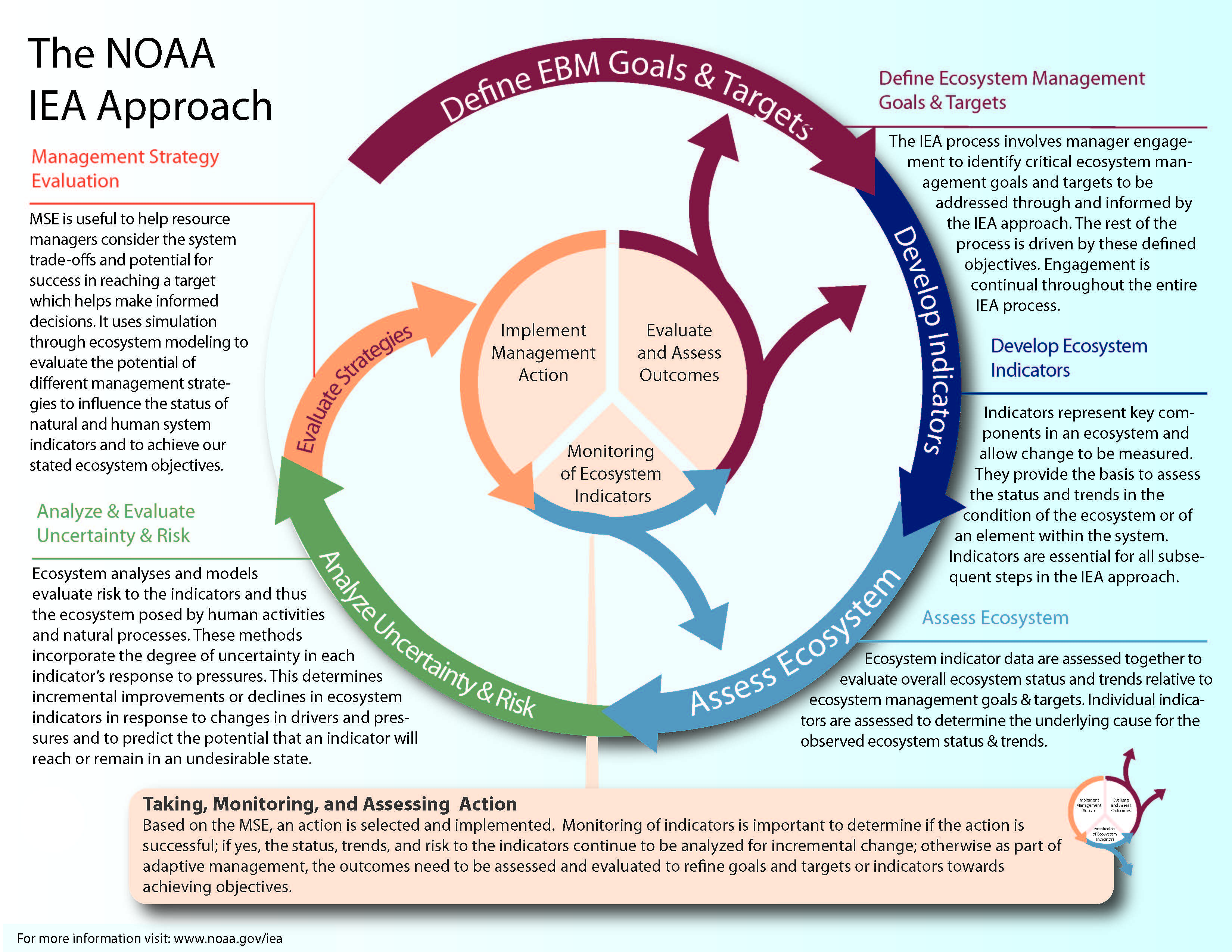What is NOAA’s Integrated Ecosystem Assessment?
NOAA’s Integrated Ecosystem Assessment (IEA) is an approach that engages scientists, stakeholders, and managers to integrate all components of an ecosystem, including human needs and activities, into the decision-making process so that managers can balance trade-offs and determine what is more likely to achieve their desired goals. This approach provides the science necessary to carry out Ecosystem-Based Management and is a key part of NOAA’s ecosystem science enterprise.


IEA approach is scalable
The IEA approach is iterative and can be adapted to meet the goals of the ecosystem as the environment and human activities change. An IEA can be implemented at the scale of the management issue or scope of the management body of interest; from addressing more traditional single species, sector, or ecosystem service needs within a broader ecosystem context all the way to full multi-sector EBM.
IEA approach is collaborative
The IEA approach is implemented collaboratively with managers and stakeholders. The NOAA IEA program is currently implementing the approach in 5 of 8 NOAA regional ecosystems. We have built strong working relationships with local, state, and federal resource management entities in these regions, and are working collaboratively with a variety of partners like Fishery Management Councils, National Marine Sanctuaries, and state coastal management agencies to implement and support management needs in an ecosystem context.
IEA approach is adaptable
The approach is designed to receive regular feedback to enable adaptive management as human and environmental aspects of the system evolve.
IEA approach is flexible
As depicted in the IEA “loop” diagram, the approach provides a consistent national approach but is flexible to accommodate regional needs. While the approach is an established framework, it is not prescriptive about the tools that can be used to implement the process. There are many relevant quantitative and qualitative tools that can be applied. Selection of which tools are used is dependent on available science capacity and the management objectives.
